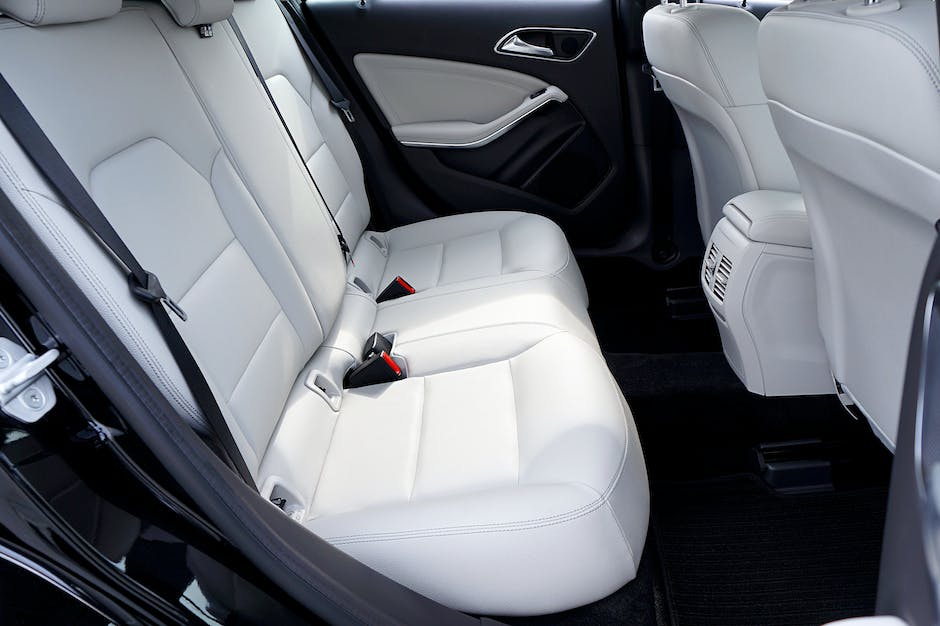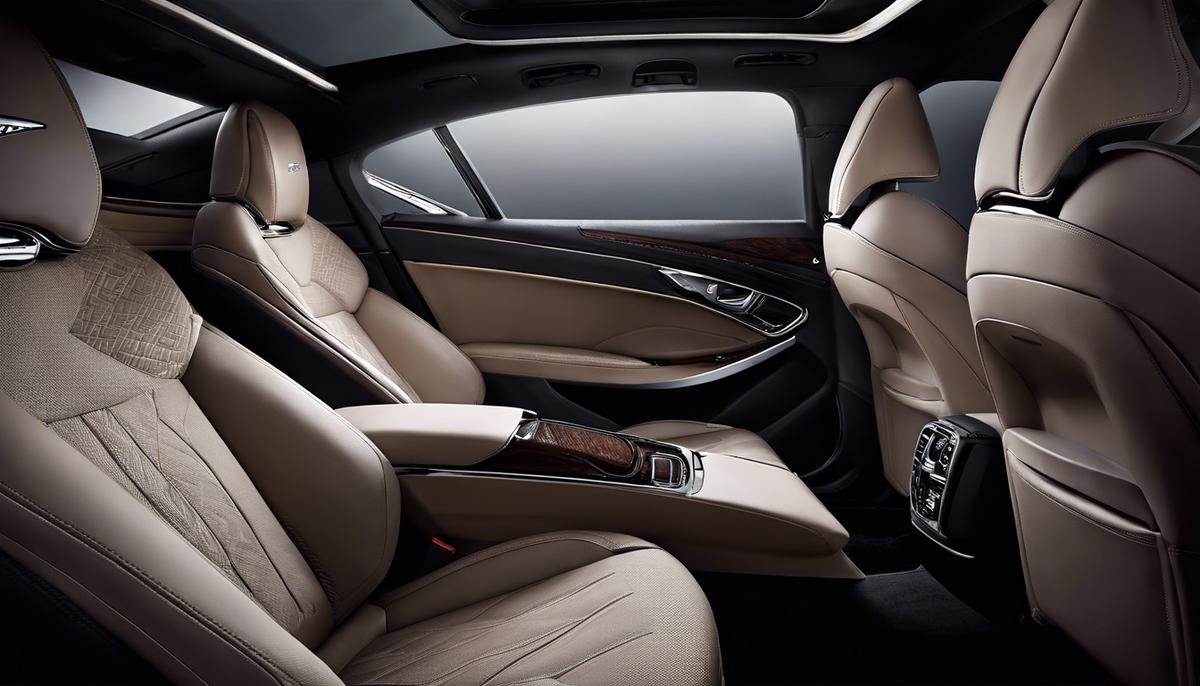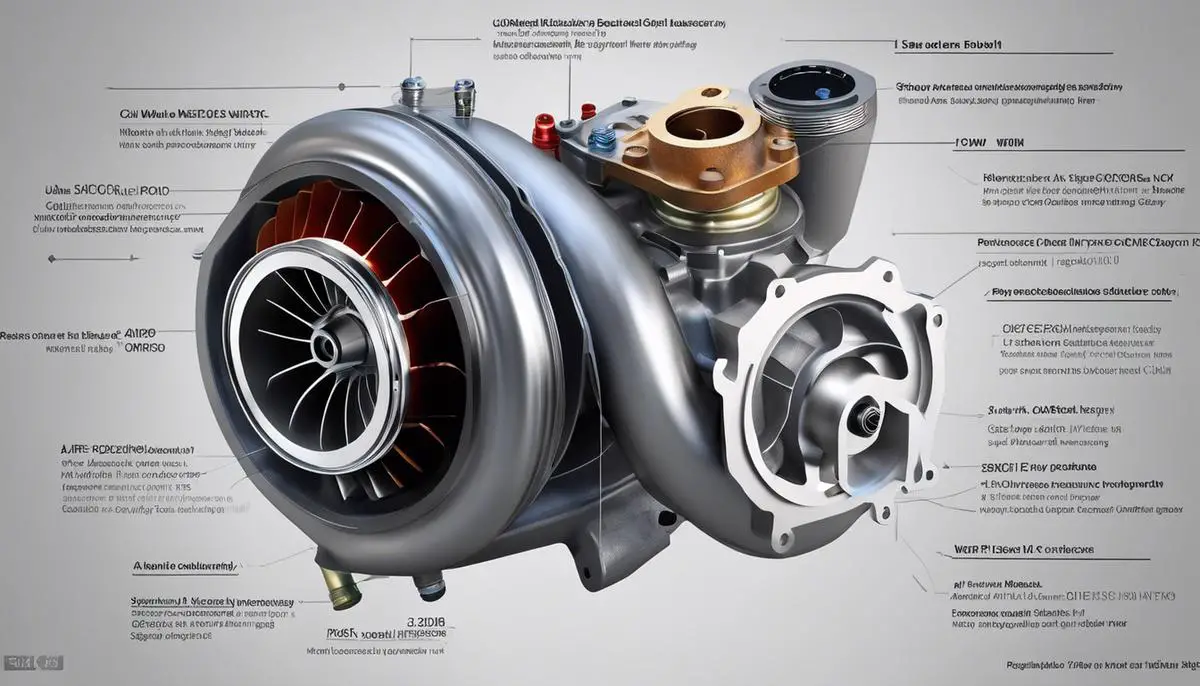Emphasizing comfort and luxury, the world of sedans is forever exploring new dimensions to provide a delightful travel experience. Key to this are several factors; however, the pivotal role played by rear seat legroom is often overlooked. By delving deep into the concept of rear seat legroom, this document seeks to enlighten the reader on what it entails and how it impacts your in-car journey. Get ready to expand your knowledge about the significance of vehicle classification in this context, and explore leading sedans that deliver on the promise of generous rear seat legroom. But the discussion doesn’t end there, as it further navigates through other important factors in dictating overall comfort. Lastly, peer into the future with an overview of upcoming sedan models and their anticipated offerings in terms of rear seat space.
Contents
Understanding Rear Seat Legroom
Doesn’t it just make your day when your car’s rear seat legroom is spacious and generous? Comfort in a car is not just meant for the driver but for all aboard! If you’ve ever wondered about rear seat legroom and its significance, this article will stoke the spark of your curiosity.
To get started, let’s demystify the term. “Rear seat legroom” is precisely what it sounds like: the space offered for passengers sitting in the back seats of a vehicle to stretch out their legs. It is a measurable trait, typically denoted in inches, which is a significant component of the total comfort package any vehicle offers.
The literal and figurative importance of legroom in any car’s rear seats is no small matter. First and foremost, legroom plays a crucial role in passenger comfort, especially in long-runs or road trips. No one likes to feel cramped, knees bucked up against the back of the front seat, right? The freedom to stretch out, to shift position during a long journey, is something we all love about spacious vehicles.
Besides this, an ample rear seat legroom might also signposts certain well-desired safety aspects. In case of a collision, passengers sitting in the back with enough legroom are less likely to hit the front seats, taking into account seatbelt usage of course. In essence, the comfort benefit potentially comes coupled with an extra layer of safety.
By now you might be thinking, does every car on the road provide enough legroom? Unfortunately, the answer is no. Compact cars, simply due to their nature, are prone to have less rear seat legroom than larger vehicles like sedans, SUVs, or minivans. Then again, it’s not a strict science, some compact cars might surprise you with their clever use of interior space.
When you’re in the market scouting for a perfect set of wheels or while choosing a rental for that getaway weekend, fact-checking rear seat legroom can pay off substantially in terms of comfort. After all, comfort can be that under-the-radar factor which might tip the scales towards a more enjoyable ride.
Let this cherishing hobby imbue you with this knowledge – that recognizing the importance of rear seat legroom matters just as much as any other specifications in a vehicle. And isn’t this delightful hobby about the joy of the drive, the journey, more than just the destination? Too little rear seat legroom can transform a pleasant trip into a game of cramps. So, foster the enthusiasm for roomy back seats, make that drive a more appealing adventure for everyone along for the ride!

The Role of Vehicle Class
The Interplay Between Vehicle Class and Rear Seat Legroom: An Understated Connection
It’s no secret that everyone desires a ride that offers comfort, but have you ever wondered how vehicle class manipulates the passenger’s rear seat legroom? Let’s delve right in to understand the connections.
When considering vehicle class, the type of car isn’t just about the exterior aesthetics or the power of the engine. It turns out, it also governs the arrangement of interior space including rear seat legroom. Interestingly, not all vehicle classes are created equal in terms of this important metric, with definitive disparities evident among the different classes.
Typically, compact cars provide the least amount of rear seat legroom. Why is that? Simply put, it’s a matter of economics of space. Compact cars, by their essential design, have a smaller wheelbase which instinctively limits the room available for passengers. Despite a well-thought-out design to maximize space, these vehicles often fall short when it comes to ample rear seat legroom.
However, don’t despair! If legroom is a deal breaker, both midsize and full-size sedans often offer satisfactory rear seat legroom. The extended length and broader wheelbase of these vehicles afford them the luxury of granting extra inches for the passengers’ comfort.
Yet, for those who not only desire space but demand it, SUVs and minivans are the perfect solution. These vehicles, owing to their tall build and widened stance, offer generous amounts of rear seat legroom. Each row of seats, including the often-neglected last row, receives a fair allocation of space. Not to forget, with the freedom to adjust and fold seats, you can essentially customize your legroom.
Opting for a hybrid vehicle? Be ready for a mixed bag. Some hybrids design their battery placement to minimize intrusion into passenger space, thereby ensuring ample rear seat legroom. However, others may compromise on this comfort factor due to their emphasis on fuel-efficiency and aerodynamic design.
Long story short, vehicle class holds substantial power in dictating the rear seat legroom. When wading through the sea of car options, always reserve a thought for this often underrated factor. Moreover, if you hold the reins of a car rental company, bear in mind that when travelers rent a vehicle, rear seat legroom could be a deciding factor for customer satisfaction. After all, car comfort is not solely a driver’s privilege. It’s an experience every passenger deserves and with the right vehicle class choice, it’s not a far-fetched idea. Stay informed and choose wisely!

Top Sedans for Maximum Rear Seat Legroom
Moving forward, let’s dive into the diverse list of sedans catering the prime need for ample rear legroom.
Full-size premium sedans certainly lead the pack when it comes to spacious seating. A shining example is the Audi A8. With an impressive 44.3 inches of rear legroom, it could easily become the benchmark for opulent seating. The Lexus LS isn’t far behind with 38.9 inches, providing a luxurious cushion for frequent travel.
Mid-size sedans may feel like the proverbial middle child, but they come packed with surprises. Take Hyundai Sonata, it’s exuding prowess with a decent 34.8 inches of rear legroom. The traditional Honda Accord is no less shining bright with 40.4 inches, making it an embodiment of ergonomics and comfort.
Compact cars, often thought to compromise on rear legroom, tell a different tale. The Hyundai Elantra and the Honda Civic, both offer an impressive 37.3 inches of legroom. Thus, debunking the myth of compromised space in compact cars.
When talking about hybrid sedans, Toyota Avalon Hybrid demands a mention with a whopping 40 inches of rear legroom. A similar story is told by the Honda Accord Hybrid, which gives the traditional mid-sized sedan a run for its money with 40.4 inches.
Now, let’s discuss the luxurious SUVs and minivans. They practically dominate the space narrative. The Cadillac Escalade ESV offers a massive 39.1 inches of rear legroom. The family favorite, Honda Odyssey, doesn’t lag with a decent 38.1 inches, making family trips a comfortable journey.
Importantly, the rear seat legroom in the named vehicles is not an afterthought. It’s a strategic design component focus, and these models have meticulously put this into practice, thereby raising the bar for passenger comfort.
While aesthetics and performance undoubtedly matter, ensuring comfort for all passengers is a significant factor. Clearly, more and more manufacturers are realizing this, making journeys more pleasant than ever. In the pursuit of the perfect vehicle, the detailed information on sedans offering ample rear legroom is sure to come in handy. Remember to put comfort at the forefront when on the hunt for the next perfect ride!

Other Factors Influencing Comfort
Moving beyond legroom, it’s essential to look at several other factors that greatly contribute to rear seat comfort. These include seat design, climate control, noise insulation, and access to technology. Here’s a more comprehensive look at each of these crucial aspects.
Diving into seat design, comfort is largely dictated by the level of support given to a passenger’s back and thighs. The curvature of the seat back should ideally mold to the spine’s natural shape, delivering ergonomic support, especially necessary for long rides. Some premium vehicles even feature rear seats with multiple adjustment points, providing a highly personalized seating posture.
Rear seat comfort is also influenced by how well the vehicle isolates its occupants from the outside environment, particularly harsh weather conditions. This is where climate control steps in. Vehicles offering rear seat climate control allow passengers to adjust their surrounding temperature, aiding in creating a comfortable, personalized environment. Some vehicles take it up a notch, extending seat heating and cooling functionalities to the rear seats, truly setting the bar high for comfort.
Noise insulation is another key element to rear seat comfort. A well-insulated cabin minimizes road and wind noise, contributing to a more relaxing and enjoyable ride. Advanced acoustic solutions and materials are being implemented in modern vehicles to accomplish this.
Advancements in technology also play a role in heightening comfort. For instance, luxury vehicles often feature rear infotainment systems, complete with screens, surround-sound speakers, and even online connectivity. From young children watching their favorite shows to adults catching up on work or reading the news, a rear-seat entertainment unit can deftly increase the value of the journey.
All said and done, understanding the factors impacting rear seat comfort, you now have a more rounded checklist when hunting for your next car or analyzing your current vehicle. Happy driving, everyone!

Forthcoming Sedans and Expected Legroom
Revolving our discussion around rear seat legroom, it’s worth noting that car manufacturers are continually incorporating improved designs to optimize space. In the latest sedan models, a noticeable trend is increased emphasis on seat design and support. To complement even ample rear seat room, manufacturers are using ergonomic designs to improve support, enhancing passenger comfort even on long journeys. Additionally, the upholstery and cushion materials have been upgraded, resulting in optimal rider satisfaction.
Moreover, climate control innovations play a substantial role in complementing ample rear seat legroom. Imagine getting into a spacious back seat, and the temperature is just right! Advanced climate control systems evenly distribute the AC or heat flow to the rear seats, ensuring that rear seat passengers enjoy an equally comfortable environment as front seat passengers. Enhanced ventilation systems have further improved the passenger experience, ensuring freshness all around.
Noise is another critical factor that can impact the overall comfort of passengers, regardless of the legroom. Newly released sedan models have increased noise insulation for a quieter and more relaxing ride. By reducing both engine noise and external noise penetration, these models enhance the experience of rear passengers by providing a quiet and serene environment.
The latest sedans also heavily focus on technology and entertainment options to augment the rear passenger experience. In-car technology is no longer just about a fancy dashboard and stereo upfront. From inbuilt Wi-Fi, USB ports, to individual entertainment screens in the rear seats, technology innovations have transformed rear seat experience. These improvements further amplify the rear seat comfort, creating an entertainment haven that pairs well with vast leg space.
In a nutshell, forthcoming sedan models are impressing not only with increased rear-seat legroom but with a holistic approach that factors in seat design, climate control, noise insulation, and tech-savvy enhancements. Together these innovations provide an all-encompassing comfortable journey, making it a pleasure for passengers to sit back, stretch out, and enjoy the ride.

As sedans continue to evolve and innovate, one thing remains certain – the emphasis on ensuring comfort is paramount. With an increasing focus on rear seat legroom, manufacturers are bridging the gap between comfort and functional design. A quality, well-spaced seating option can enhance your trip, irrespective of the vehicle’s class. While this outlines a few top models in terms of their legroom offerings, there are still a plethora of factors contributing to an overall comfortable ride. Continual advancements and upcoming sedan models promise to keep comfort, style, and functionality at the forefront. Therefore, be it your regular city ride or a long highway trip, a well-informed choice of sedan will certainly add value to your journey and mark a significant step forward in your car-buying experience.



